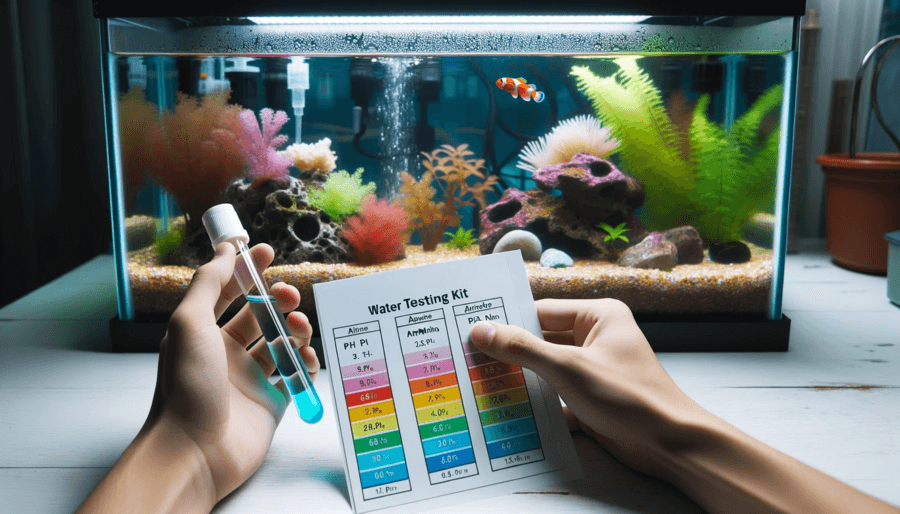What Are The Specific Needs Of Brackish Water Fish?
Brackish water fish have distinct requirements that set them apart from freshwater or saltwater species. If you’ve ever wondered about the specific needs of these unique aquatic creatures, this article is here to shed some light on the topic. From appropriate salinity levels to suitable habitat conditions, understanding the specific needs of brackish water fish is essential for their health and well-being. So, let’s dive into the fascinating world of these fish and explore what it takes to create the perfect environment for them.
Specific Needs of Brackish Water Fish
Brackish water fish have unique requirements that set them apart from freshwater and saltwater species. Understanding and meeting these needs is crucial in order to create a thriving brackish water aquarium. In this article, we will discuss the specific needs of brackish water fish, ranging from salinity requirements to tank mates and compatibility.
Salinity Requirements
One of the key factors in maintaining a healthy brackish water environment is ensuring the correct salinity levels. Brackish water fish thrive in water that has a salinity somewhere between freshwater and saltwater, typically ranging from 1.005 to 1.015 specific gravity. To achieve this, you can use a hydrometer or a refractometer to measure the salinity of the water. Regular testing is essential to ensure the salinity remains within the appropriate range.
pH Level Considerations
In addition to salinity, the pH level of the water is another crucial factor for the well-being of brackish water fish. Most brackish water species prefer a slightly alkaline pH, ranging from 7.5 to 8.5. To maintain a stable pH level, it is recommended to use a pH test kit and make adjustments as needed using appropriate buffers or chemicals. Regular monitoring of the pH level is necessary to ensure a healthy environment for your fish.
Temperature Range
Brackish water fish come from regions with tropical or subtropical climates, so it is important to maintain a suitable temperature range in your aquarium. Generally, brackish water fish thrive in temperatures between 75°F and 82°F (24°C – 28°C). This temperature range closely resembles their natural habitat and allows them to thrive and exhibit their natural behaviors. Using a reliable aquarium heater and thermometer is essential to maintain a stable temperature in the tank.
Water Quality and Filtration
Just like any other aquatic environment, maintaining good water quality is essential for the health and well-being of brackish water fish. Proper filtration is crucial to remove toxins, waste, and other contaminants from the water. A high-quality filtration system, such as a canister filter or a sump, should be used to ensure effective mechanical, biological, and chemical filtration. Regular water changes and testing for ammonia, nitrite, and nitrate levels are also necessary to keep the water clean and safe for your fish.
Diet and Feeding
Brackish water fish have specific dietary requirements that need to be met in order for them to thrive. Most brackish water species are omnivorous, which means they eat a combination of plant matter and small invertebrates in the wild. Providing a varied diet consisting of high-quality flakes or pellets, supplemented with frozen or live foods such as brine shrimp, bloodworms, or daphnia, will ensure your fish receive the necessary nutrients. It is important to feed your fish appropriately according to their size and avoid overfeeding, as it can lead to health issues.
Aquarium Size and Setup
Choosing the right aquarium size is crucial for housing brackish water fish. The tank should provide enough space for your fish to swim freely and exhibit their natural behaviors. The minimum recommended tank size for most brackish water species is 20 gallons, but larger tanks are generally better as they offer more stability in terms of water parameters. Adequate space also allows for the addition of appropriate tank mates, which we will discuss later in this article. When setting up the tank, ensure it is properly cycled and equipped with the necessary equipment, including a heater, filter, and lighting.
Decorations and Substrate
To create a natural and aesthetically pleasing environment for your brackish water fish, decorations and substrate selection play an important role. Choosing a substrate that closely resembles the natural habitat of your fish, such as sand or gravel with a mix of crushed coral, will help maintain the appropriate pH and provide a suitable substrate for live plants, if desired. Driftwood, rocks, and caves can also be added to create hiding places and territories for your fish. Just ensure that the decorations are clean, free of sharp edges, and do not contain any harmful chemicals that could leach into the water.
Lighting Requirements
Proper lighting is important for brackish water aquariums, as it not only provides visibility but also supports the growth of plants and algae. Most brackish water species thrive under moderate to bright lighting conditions. It is essential to choose the appropriate type of lighting, such as fluorescent or LED lights, that provides a suitable spectrum for the plants and fish in your tank. It is also important to establish a suitable photoperiod, mimicking the natural day and night cycles, to ensure your fish have a regular day-night rhythm.
Plants and Vegetation
Although brackish water fish are not known for their heavy reliance on live plants, adding suitable aquatic vegetation can enhance the overall health and aesthetics of your tank. Some plant species, such as Java Fern, Anubias, and Vallisneria, can tolerate brackish water conditions and provide oxygenation, nutrient absorption, and hiding places for your fish. However, it is important to research the specific plant species to ensure compatibility with the brackish water environment and the fish species in your tank.
Tank Mates and Compatibility
When selecting tank mates for your brackish water fish, it is important to consider their compatibility in terms of both size and temperament. Brackish water species have different behavioral traits, and some may be more aggressive or territorial than others. It is important to research the specific needs and behavior of each species before introducing them to the tank. Peaceful and similarly sized fish, such as mollies, some goby species, or certain pufferfish, can be suitable tank mates for many brackish water species. However, it’s always recommended to consult with an expert or experienced aquarist for specific tank mate recommendations to ensure a harmonious and stress-free environment for your fish.
In conclusion, understanding the specific needs of brackish water fish is essential for creating a thriving and sustainable aquarium. From maintaining the correct salinity levels to providing suitable tank mates, each aspect plays a crucial role in the overall well-being of your fish. By meeting these needs, you can create a beautiful and healthy brackish water environment that allows your fish to thrive and exhibit their natural behaviors.

